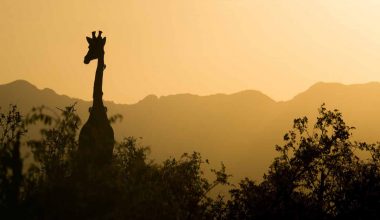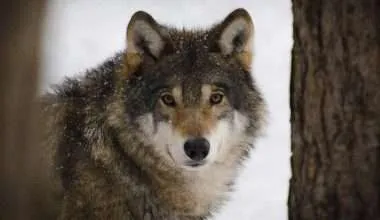Table of Contents Show
Forests despite covering only about 30% surface of our planet, are home to more than 80% of terrestrial biodiversity. Besides that, forests have an abundance of natural resources that are useful to 1.6 million people along with other creatures.
However, the forests are now on the verge of extinction because of our carelessness and overexploitation.
Myriad human activities have caused the rapid destruction of forests. Deforestation has warranted more conservative practices, which begin with awareness. You can gain an insight into causes, effects and solutions for deforestation by going through this write up.
Below are the 10 Most Endangered Forests in the World.
1. Indo-Burma, Asia Pacific
It spans across Cambodia, Lao PDR, Myanmar, Thailand, Viet Nam, and parts of southern China. This endangered forest consists of both subtropical and tropical wet broadleaf forests. These forests are home to a variety of species of birds, freshwater turtles, and large freshwater fishes, like giant catfish.
The International Union of Conservation of Nature has pointed out ten endangered animal species in the area.
Only 5% of these forests remain. There are many causes for such large-scale destruction. These include aquaculture, overfishing, dam construction, and unsustainable cultivation techniques. However, efforts are underway to conserve the natural balance in the area. These include the investments by the Critical Ecosystem Partnership Fund.
2. New Caledonia, Asia-Pacific
It is one of the smallest forest regions, located in a group of islands in the Melanesian region, near Australia.
It consists of tropical and subtropical moist broadleaf forests. Moreover, the region includes five endemic plant families and is the only parasitic conifer in the world. It also has around two-thirds of all Araucaria trees.
Not only that but it is also home to Kagu, an endemic blue-grey bird. Now around 95% of the original area has been lost due to the destruction of forest, nickel mining, and invasive species threatening the local flora and fauna.
Deforestation caused by logging and nickel mining has destroyed almost 95% of the original forest. New Caledonia rainforest once covered 70% of the Island but now exists at only 20% of the area. According to Global Forest Watch, New Caledonia lost 374 hectares of tree cover, equal to 184 kilotons of CO₂ emissions from 2010 to 2022.
3. Sundaland, Asia-Pacific
Located in Indonesia and Malaysia, it is one of the most biologically diverse regions. It covers 17,000 islands and hosts the world’s 10% flowering plants, 12% mammals, 17% birds, and more than 25% fish species.
Many of the species found here are endemic so losing the forests means endangering them. Here too rapid deforestation is the main cause that endangers the forest. Slash-and-burn agriculture, industrial forestry, and illegal logging have reduced the forest to only 7% of the original extent.
Furthermore, poaching of native species like rhinos and Bali and Javan tigers has pushed many of the species to the point of extinction. Combine this with illegal animal trades and the native animal species have a slim chance of survival.
4. Philippines, Asia-Pacific
Spanning across 7100 islands, the forests of the Philippines are (or perhaps “were” would be more accurate) home to a huge portion of the world’s endemic species. These include 63% species of land mammals, 67% species of reptiles, 43% species of land birds, and a staggering 75% species of amphibians.
Philippine eagle, dwarf ox, cloud rats, panther flying frog, and flying lemur are just a few of the majestic species found in this region. It has astounding levels of endemic species.
Besides animals, the forest had over 6,000 plant species. However, the last century has seen a drastic reduction in the forest leaving only 7% of the area in the early 1900s.
The rising population in the area (7.6 million in 1910-1911 to around 100 million), is the first cause of the drop in forest area. More people means more need for land for human use. This may include farming, timber, housing, and other urban developments. The forest cover is also reduced by natural disasters that include floods, droughts, fires, and siltation.
5. Atlantic Forest, South America
The Atlantic Forest is the second most diverse ecosystem after the Amazon. It extends along the eastern coast of South America from Brazil, along the Atlantic coastline into Paraguay and Argentina.
Atlantic Forest houses 20,000 species of plants with a whopping density, in some areas, of 450 species of trees per hectare.
There is also a huge variety of species of birds, mammals, reptiles, and amphibians. It has quite a few endangered species such as jaguars, golden lion tamarins, woolly spider monkeys, and maned three-toed sloths. Moreover, the attractive red-tailed parrots are also among the threatened species.
It is now considered one of the most vulnerable regions with only 8% of the original habitat remaining. That is due to logging, the urbanization of Rio de Janeiro and São Paulo, and agricultural expansion, particularly soy, sugarcane, and coffee plantations.
Not only that but the loss of habitat and continued hunting has threatened many of the animal species.
6. Mountains of South-West China, Asia Pacific
The Mountains of Southwest China are the most botanically rich temperate region in the world. However, all species present here have not been documented yet.
The region contains about 12,000 species of plants, equal to 40 percent of all the plant species in China. Furthermore, it hosts 600 bird species, 230 mammal species, 90 reptile species, 90 amphibian species, and 90 fish species.
Out of the above 12,000 species at least 3500 are endemic. They include giant panda, golden monkey, white-speckled laughingthrush, Szechwan pit viper, and others. Only 8% of the original temperate coniferous forests currently remain in existence.
The primary threats faced by the forests are illegal hunting. Moreover, unsustainable harvests as well as the trade of wildlife and fuelwood also speed up deforestation. Most devastating to the forest is the construction of infrastructure like the Three Gorges Dam.
7. California Floristic Province, North America
The California Floristic Province spreads along North America’s Pacific coast. It has a Mediterranean-type climate characterized by hot, dry summers and cool, wet winters.
This region has a higher proportion of endemic plants than animals. The tropical and subtropical broadleaf forests are home to some of the endangered animals. These include giant kangaroo rats and desert slender salamanders.

It is also a breeding ground for the Critically Endangered California condor. Many large animals have already gone extinct with only 10% habitat remaining.
Furthermore, it is home to giant sequoia, the planet’s largest living organism, as well as its taller but smaller relative, coastal redwood.
It has been a victim of California’s great economic progress which is the most populated and fastest growing state in the United States. Moreover, it is among the top US states based on economy.
This progress has meant the sacrifice of forests to commercial activities. These include farming, urbanization, pollution, encroachment, mining, oil extraction, and construction.
8. Coastal Forests of Eastern Africa
The Coastal Forests of Eastern Africa are tiny and fragmented forests spread across 6 countries. The nations are Somalia, Kenya, Malawi, Mozambique, Tanzania and Zimbabwe.
They comprise a mix of moist and dry forests. They have coastal thickets, savanna woodlands, swamps, and mangroves. They also are home to many animal species. The wildlife includes three endemic and highly threatened species of monkey and two bushbaby species.
Most of the original forests have already lost ground to agricultural expansion and urbanization. Hence, only about 10% of the original forest remains in pristine condition.
The remaining habitat has contracted to just 400 patches of lowland forest. It now covers an area of about 6,259 square kilometers, with worsening soil quality.
9. Madagascar & Indian Ocean Islands, Africa
These forests are cut off from the African mainland, and thus despite the close proximity they have a unique variety of endemic species.
These species are still not fully documented; for example, in Madagascar 22 new mammal species and subspecies were discovered in the past 15 years. These species are still not fully documented. For example, the past 15 years have seen the discovery of 22 new mammal species in Madagascar.
This region has huge endemic wildlife. This area is home to over 1,500 distinctive plant species. Additionally, it hosts exclusive bird, primate, and freshwater fish families not found anywhere else on the planet.
The arrival of humans on the island significantly disrupted ecosystems. It led to the extinction of the dodo just a few years after the first settlers arrived in Mauritius.
People face widespread poverty and underdevelopment. So they do have to depend heavily on nature for their economic activities. This creates a great deal of stress for the ecosystem. And it has resulted in just 10% of forest cover remaining.
The practice of tavy is the primary cause of deforestation. It is an agriculture technique involving slash-and-burn methods. Other causes are overhunting of animals for meeting local food demands, and illegal trading of exotic species.
10. Eastern Afromontane, Africa
In East Africa as well from Saudi Arabia in the north to Zimbabwe in the south, you’ll find a region with four mountain ranges and vast plateaus. It’s quite a diverse and scenic place!
This extensive distance means it is home to many varying ecosystems. Thus it has rich biological diversity like Podocarpus, Juniperus, bamboo, Hagenia, gorilla, and more.
However, human interventions have reduced the forest to 11% of its original habitat. One cause of deforestation is expanding agriculture in the form of large plantations. The second is the growing bushmeat market. Third is timber extraction. Fourth is increasing population displacement due to civil unrest and conflicts.






